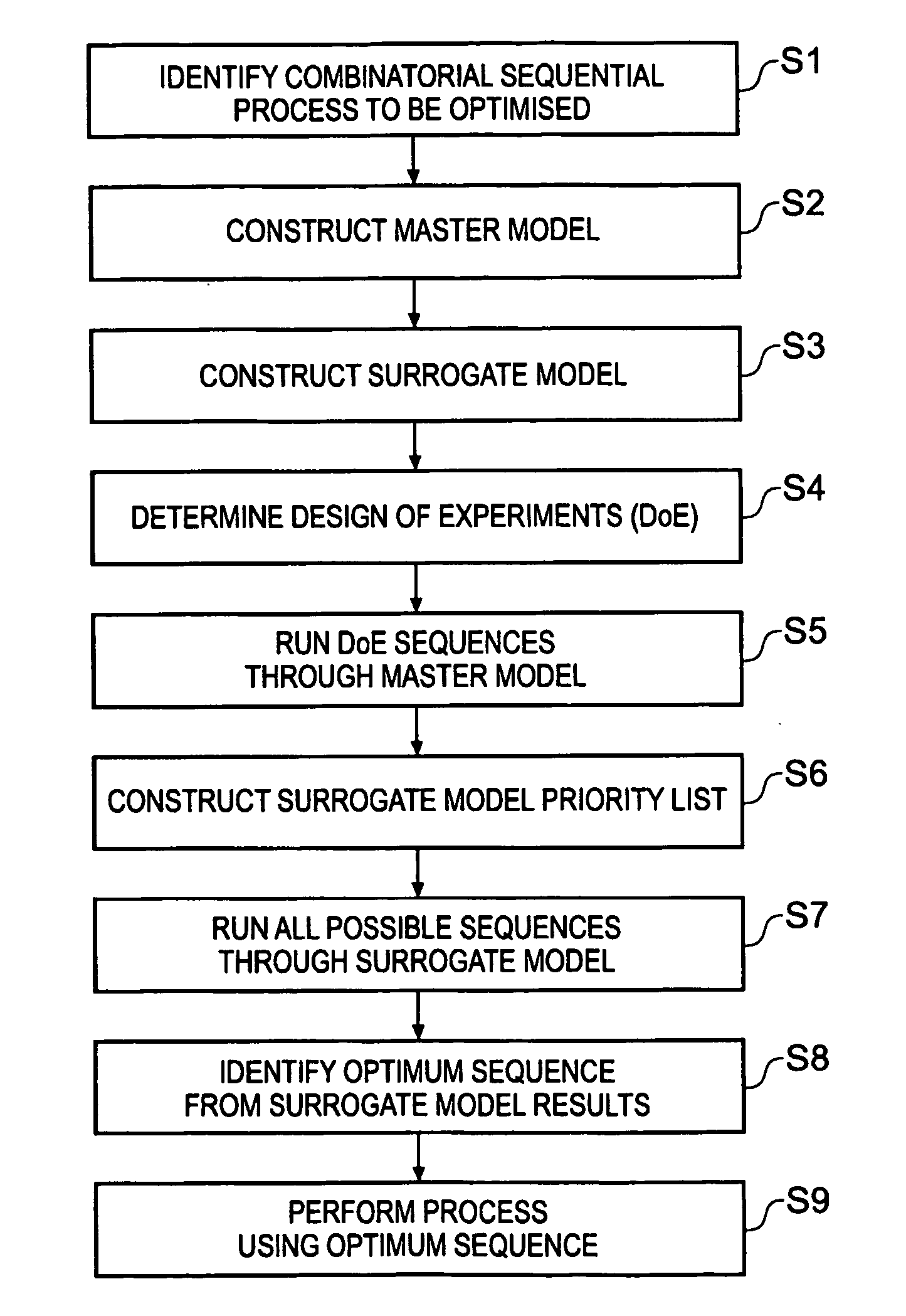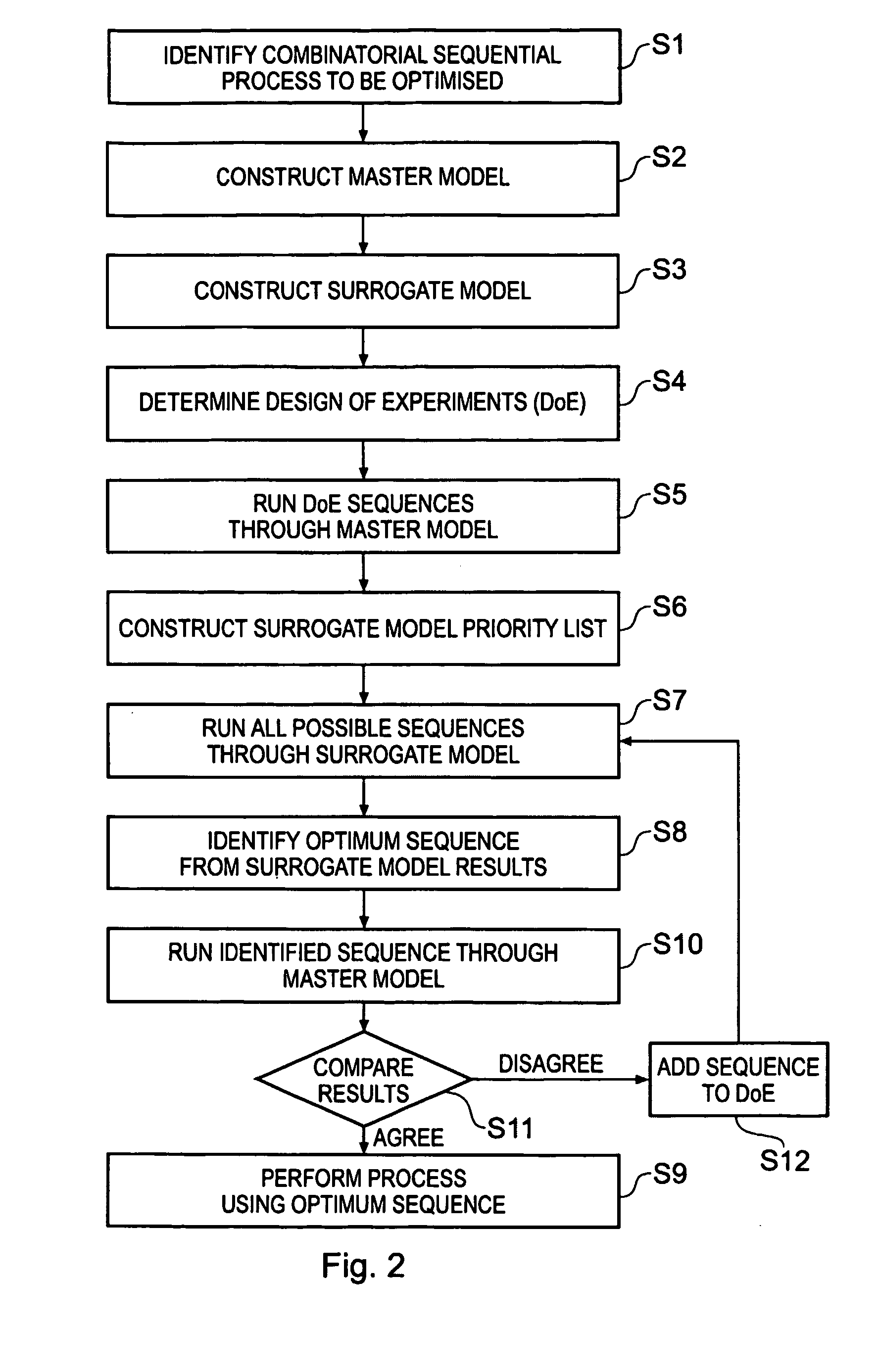Optimisation of sequential combinatorial process
a combinatorial process and process technology, applied in the field of optimisation of sequential combinatorial processes, can solve the problems of unfeasible long time for full study of the process, inability to achieve the effect of optimizing the process, so as to achieve the effect of simplifying and speeding the optimisation, reducing the amount of information, and improving accuracy
- Summary
- Abstract
- Description
- Claims
- Application Information
AI Technical Summary
Benefits of technology
Problems solved by technology
Method used
Image
Examples
example i
DETAILED EXAMPLE I
[0116] The invention will now be further described with reference to a more detailed example.
[0117] Consider a process comprising six steps. The six steps can be performed in any order, and each step can be performed in one of two ways (such as forwards or backwards, or at a first or second temperature). The ordering and the choice of which way to perform each step modify the end result of the process. Let this end result be defined by an operation parameter X, and the desired nature of the end result be such that the operation parameter has an optimal value X=0. In other words, the operation parameter is to be minimised.
[0118] Each step or event is given a label, let this be the numbers 1-6. Positive and negative values of these numbers will be used to denote the two ways of performing each event. A sequence of the steps can thus be represented by, for example [−6, 5, 3, 1, −4, 2], in which the individual numbers are the labels designating the particular events,...
example ii
DETAILED EXAMPLE II
[0166] The invention will now be further described with reference to a specific example, that of the welding of a vane in the inner ring of a gas turbine tail bearing housing (TBH).
[0167]FIG. 3 shows a perspective view of a typical TBH. It is a crucial component for the mounting of a jet engine to the body of an aircraft. Its major structural details are shown in FIG. 3, and comprise an inner ring 10, an outer ring 12 encompassing the inner ring 10, and a plurality of vanes 14 extending radially between the inner ring 10 and the outer ring 12. The vanes 14 are usually welded to the rings 10, 12 using gas tungsten arc welding, frequently known as TIG welding.
[0168] The inner ring 10 and the vanes 14 are both clamped in a desired position during the welding of these components. However, due to internal stresses generated by heating, the vane deforms. The welding causes a contraction which occurs when the melted material in the weld pool is cooled. This causes stre...
PUM
 Login to View More
Login to View More Abstract
Description
Claims
Application Information
 Login to View More
Login to View More - R&D
- Intellectual Property
- Life Sciences
- Materials
- Tech Scout
- Unparalleled Data Quality
- Higher Quality Content
- 60% Fewer Hallucinations
Browse by: Latest US Patents, China's latest patents, Technical Efficacy Thesaurus, Application Domain, Technology Topic, Popular Technical Reports.
© 2025 PatSnap. All rights reserved.Legal|Privacy policy|Modern Slavery Act Transparency Statement|Sitemap|About US| Contact US: help@patsnap.com



